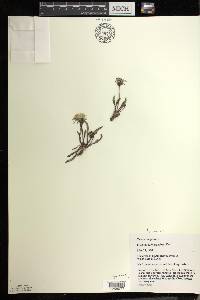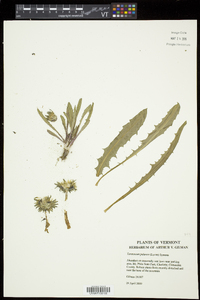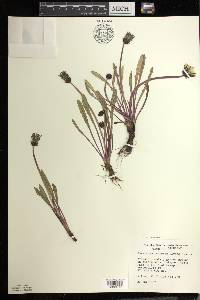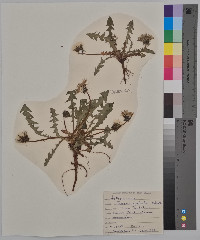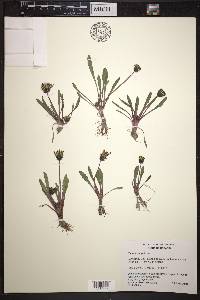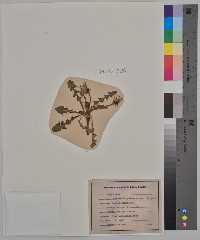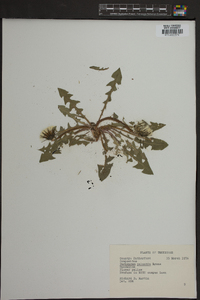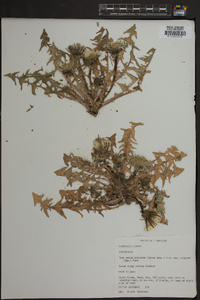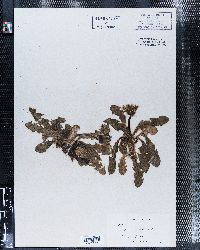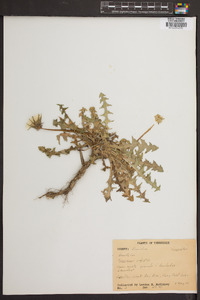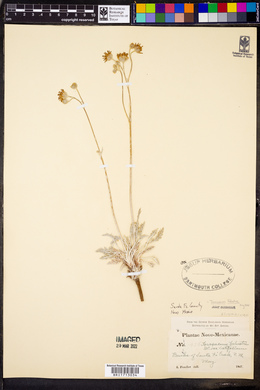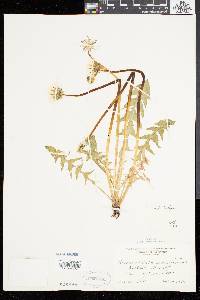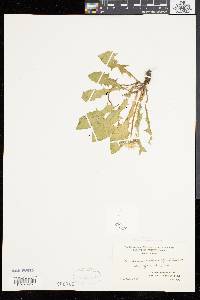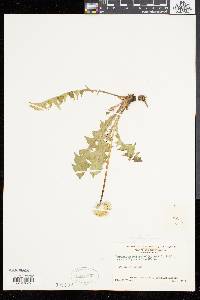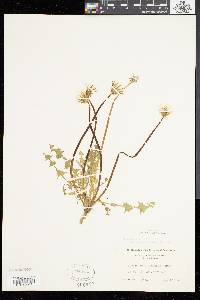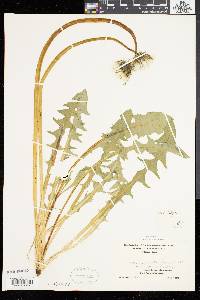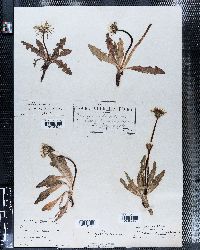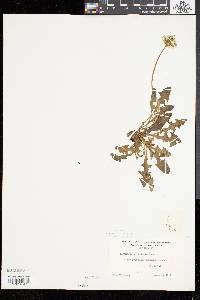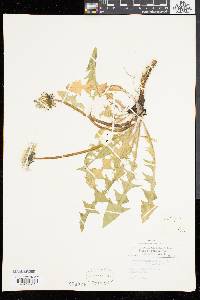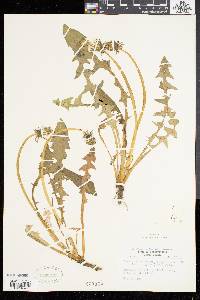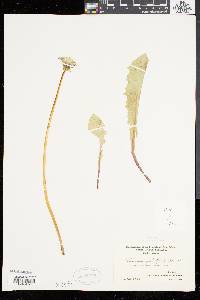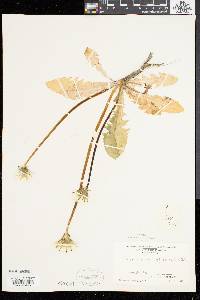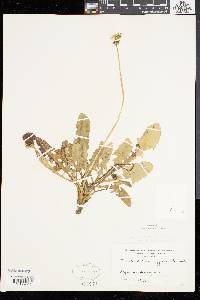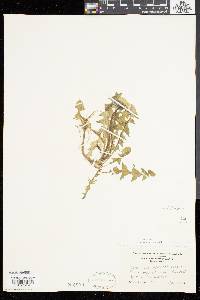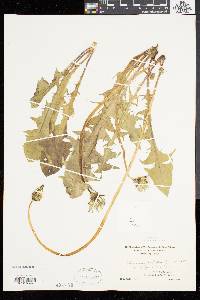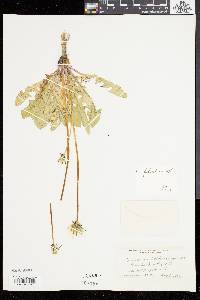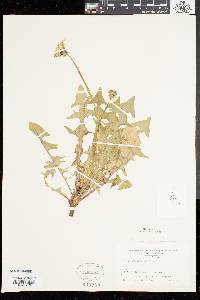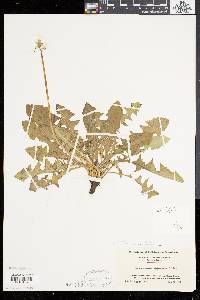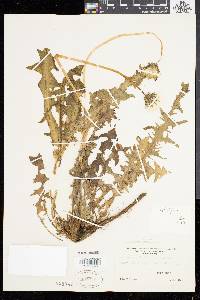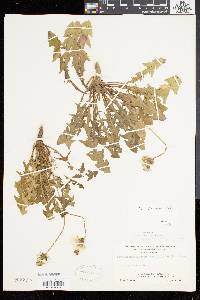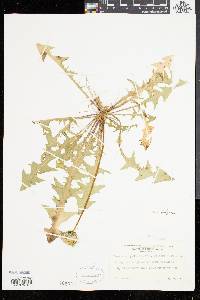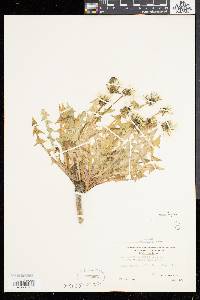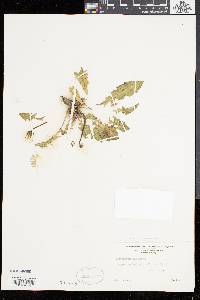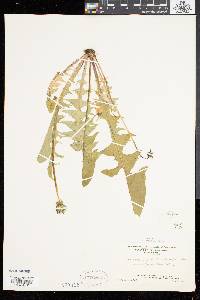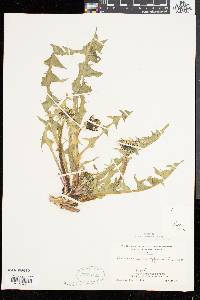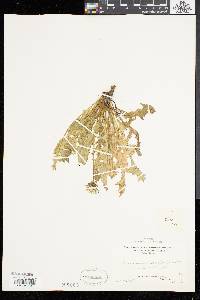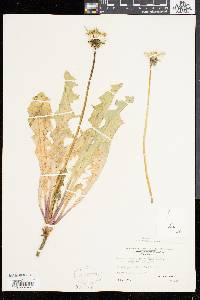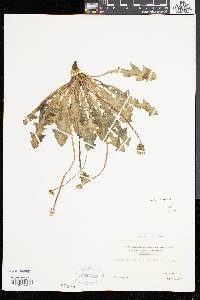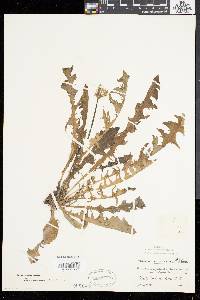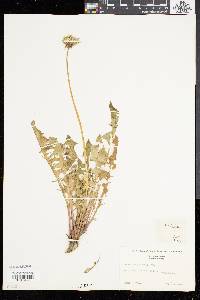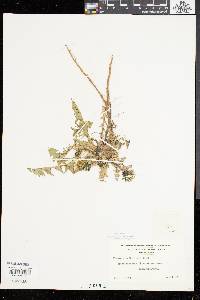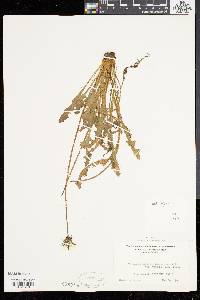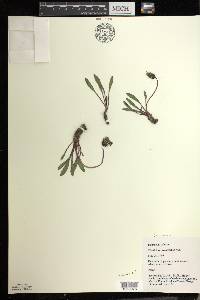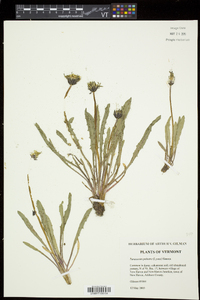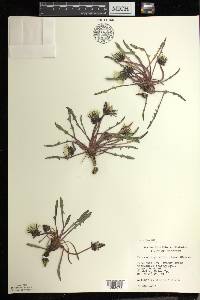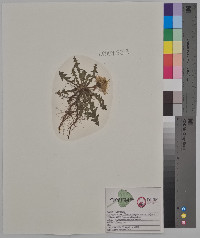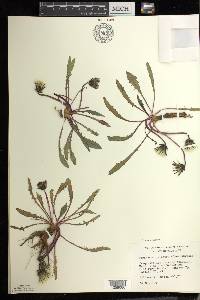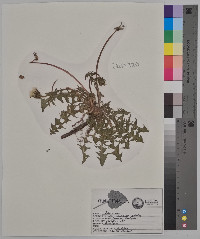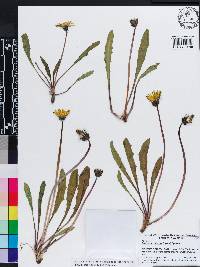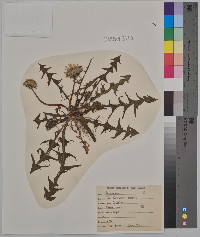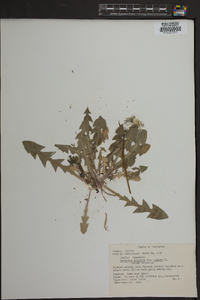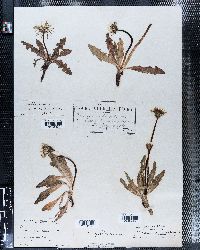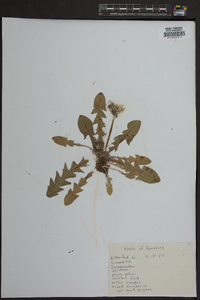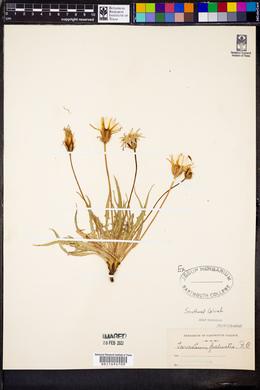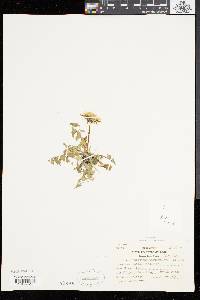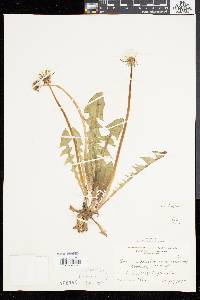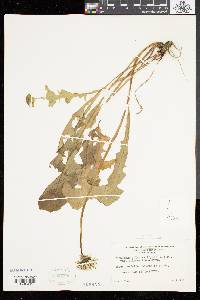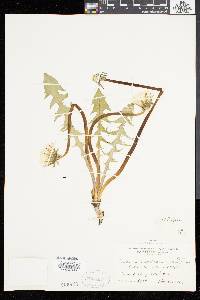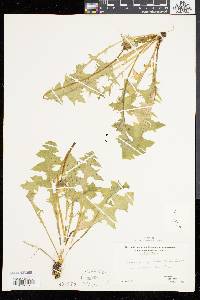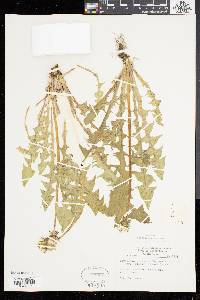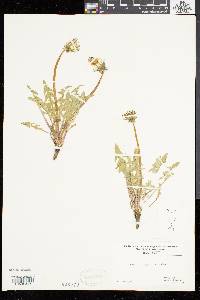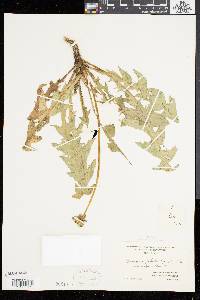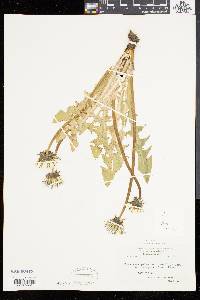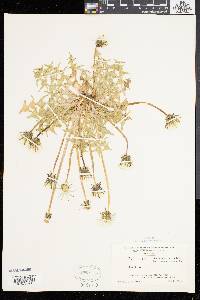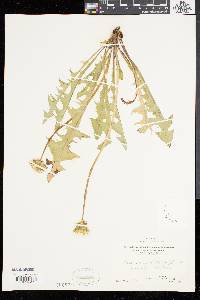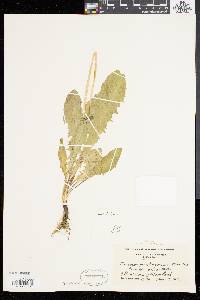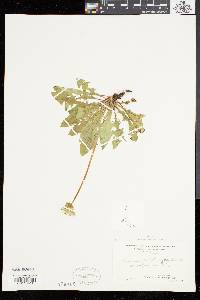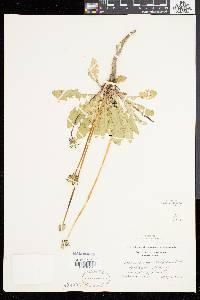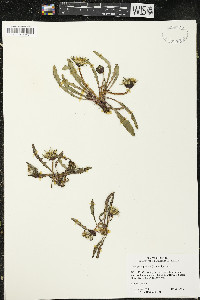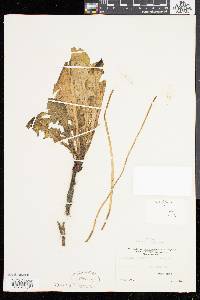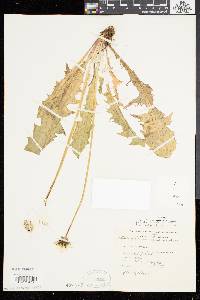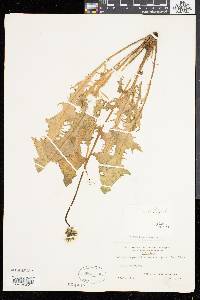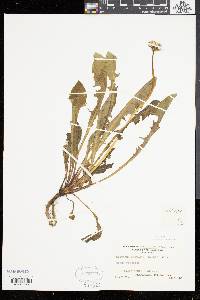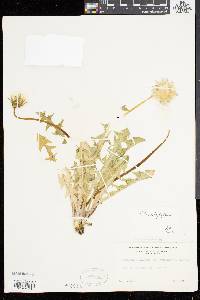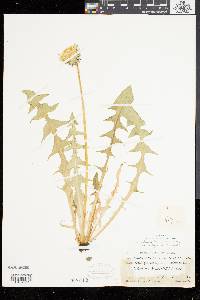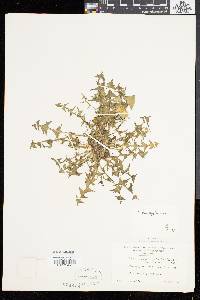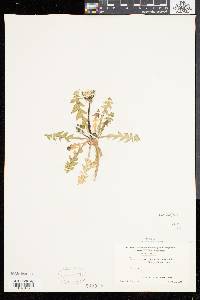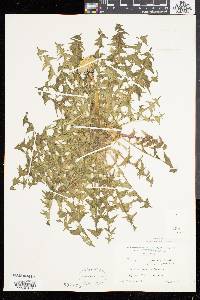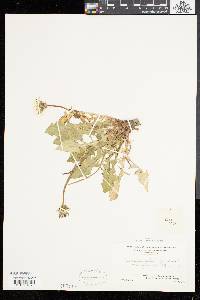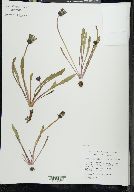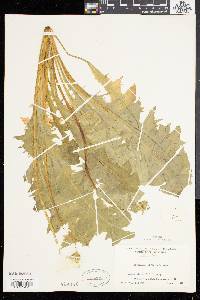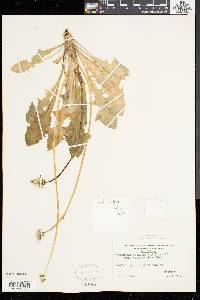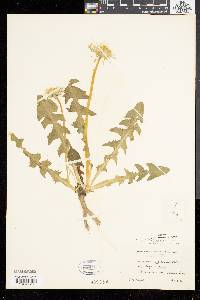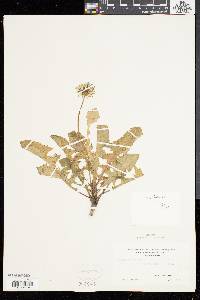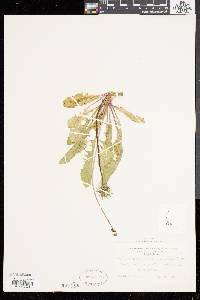Taraxacum palustre
|
|
|
|
Family: Asteraceae
Marsh Dandelion
[Taraxacum turfosum (Sch.Bip.) Soest] |
Plants 5-6.5(-10 in fruit) cm; taproots seldom branched. Stems 1-5+, decumbent to ascending, purple, (rarely exceeding foliage before fruiting), sparsely villous or glabrate to ± densely villous distally. Leaves 10+, horizontal to ± erect; petioles often purplish (midveins also), ± narrowly winged; blades oblanceolate to linear-oblanceolate, 2.5-9 × 0.2-1.1 cm, bases attenuate to long-cuneate, margins usually toothed, sometimes pinnately, shallowly lobed, lobes fewer than 10 per side, remote, (and teeth) straight to retrorse, narrow, deltate to narrowly triangular, often acuminate, apices obtuse to acute, faces glabrous or sparsely villous (particularly along midveins). Calyculi 10-15, appressed to spreading, pale to dark purplish green, ovate to elliptic bracklets in 2 series, 6-8.5 × 2-5 mm, margins ± purplish, widely scarious. apices acuminate to caudate, hornless. Involucres green to grayish green, campanulate, 12-16 mm. Phyllaries 14-16 in 2 series, lanceolate to lance-linear, 1.5-2.5 mm wide, margins scarious to narrowly scarious in proximal 1/2, apices long-acuminate, erose-scarious, hornless. Florets ca. 50; corollas yellow, outer abaxially gray-striped, 13-14 × 1.4-2.2 mm. Cypselae straw-colored to olivaceous, bodies narrowly obovoid, 2.8-4 mm, cones terete, 0.8-1 mm, beaks slender, 7-9 mm, ribs ca. 6, sharp, faces slightly muricate in distal 1/3; pappi white to cream, 4.5-6.5 mm. 2n = 24, 32, 40 (reported for complex in Europe). Flowering early spring. Wet ditches, roadsides, and waste grounds of temperate climates; 10-100 m; introduced; Ont., Que.; Mich., N.Y.; Europe. This small dandelion has only recently been reported from North America (D. F. Brunton 1989). It has now spread east into Quebec, where it is known beyond the Montreal area, west into Michigan, and south into northern New York state. It is mostly spreading in wet ditches along highways and flowers in early spring. It clearly belongs to sect. Palustria. Until it is firmly associated with a European species, I am using the name Taraxacum palustre. The name T. cognatum Stepánek & Kirschner, which designates a microspecies from central Europe, has been applied to a North American specimen sent by D. F. Brunton to J. Kirschner.
FNA 2006, McDougall 1973 Duration: Perennial Nativity: Non-Native Lifeform: Forb/Herb General: Herbaceous perennials, to 6.5 cm tall, stems hollow, 1-5 or more, decumbent to ascending, purple, sparsely villous or glabrate to densely villous distally, plants with milky sap. Leaves: Horizontal to erect, oblanceolate to linear-oblanceolate, 2.5-9 cm long and to 1 cm wide, margins usually toothed, sometimes pinnately and shallowly lobed, the lobes fewer than 10 per side, narrow, deltate to narrowly triangular, faces glabrous or sparsely villous, petioles and midveins often purplish and narrowly winged. Flowers: Heads ligulate, with about 50 florets, the corollas yellow, 13-14 mm long and to 2 mm wide, the outer abaxially gray-striped, row of bracts around outer calyx 10-15, in 2 series, 6-8.5 mm long and 2 mm wide, appressed to spreading, pale to dark purplish green, ovate to elliptic, without appendages, receptacles flat to convex, involucres 12-16 mm, green to grayish green, oblong to campanulate, phyllaries 14-16 in 2 series, lanceolate to lance-linear, outer phyllaries short and reflexed or spreading, inner phyllaries linear, in a single series, erect, heads solitary on naked, hollow, slender scapes. Fruits: Achenes straw-colored to olivaceous, bodies narrowly obovoid, 3-4 mm long, with slender beaks 7-9 mm, ribs 6, sharp. Pappus white to cream, 4.5-6.5 mm long. Ecology: Found in wet ditches, roadsides, and disturbed areas, from 50-350 ft (15-106 m); flowering early spring. Distribution: Ontario, Quebec, Michigan, New York Ethnobotany: Unknown, but other species in the genera have uses. Etymology: Taraxacum is likely derived from Arabic through Persian or the work talkh chakok meaning bitter herb, while palustre means growing in marshes. Synonyms: Taraxacum turfosum, Leontodon palustris Editor: LCrumbacher 2011 Lvs suberect, rather narrow, remotely toothed; outer invol bracts very dark, broad, strongly and permanently appressed; beak twice as long as the body of the achene; otherwise much like no. 3 [Taraxacum officinale F. H. Wigg.]; 2n=24, 32, 40. Seasonally flooded highway-ditches and wet or flooded sites in calcareous gravel or clay over limestone or marble bedrock; native of Europe, rarely intr. in se. Ont. and c. N.Y. Apr.-June. (T. turfosum) Gleason, Henry A. & Cronquist, Arthur J. 1991. Manual of vascular plants of northeastern United States and adjacent Canada. lxxv + 910 pp. ©The New York Botanical Garden. All rights reserved. Used by permission. |


